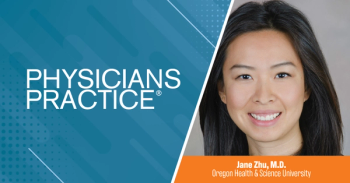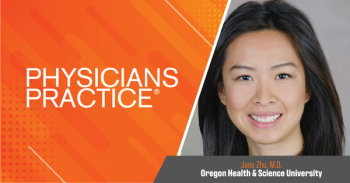
ACOs One Year Later
A look at how the Medicare Shared Savings Program has developed since its inception.
It's been about one year since CMS announced the first 27 organizations that would participate in Medicare's accountable care organization (ACO) program, also known as the Medicare Shared Savings Program (MSSP). Since then, ACOs, in which physicians, medical practices, hospitals, and other providers partner to improve care quality while reducing costs, have sprung up across the country. Last July, CMS announced another 89 organizations would participate in the Medicare program; in January, it added 106 more to the books.
"We would say that growth is accelerating," says Andrew Croshaw, a partner and managing director of the Center for Accountable Care Intelligence, which researches and analyzes the evolution and future of integrated care at Leavitt Partners, a Salt Lake City-based consulting firm. "While the number of ACOs that are known represents a very small fraction of the total number of physicians or physician groups, or the total number of hospitals, the amount of growth that we're seeing suggests to us that there is legitimate momentum in this movement."
Still, rapid growth doesn't necessarily translate to widespread understanding. Uncertainty abounds among physicians and administrators about what an ACO is and what participating in one entails. To help clear up the confusion, we spoke with ACO experts and participants. Here's what they said accountable care looks like, how it's affecting healthcare delivery, and why your practice should be paying attention.
The ACO objective
Family physician Randall Bickle's 500-plus-physician medical group, Olympia Medical Services, is made up of several practices located throughout southeast Michigan. It's also part of one of the 106 most recently selected ACOs to participate in the Medicare Shared Savings Program.
"The idea behind the accountable care organization is for us to find a way to give the highest quality care but at a lesser cost to our Medicare patients," says Bickle, whose ACO, dubbed the Physician Organization of Michigan ACO, is a partnership between nine physician groups located throughout Michigan's Lower Peninsula. "It's our responsibility as a group to find where those cost savings are without sacrificing the highest care we can give these patients."
If successful on both fronts, Bickle's ACO will share in some of those cost savings with Medicare. "There is a financial incentive to the doctor ... but there's also the idea that if we can find a way to provide better care, most of us are going to walk away feeling more satisfied that we're able to do our job better, and that's something that most doctors feel really strong about," says Bickle.
The ACO structure
While Bickle's ACO is a partnership between numerous medical groups and Medicare, no two ACOs are alike. A number of entities, such as individual practices, group practices, hospitals, and health systems, in various combinations, are partnering to form ACOs. And while hospitals sponsor many of them, meaning they establish them and determine how earned bonuses are distributed, the fastest growing type of ACO is physician sponsored, says Croshaw.
And now private payers are getting in on the action. At press time, Croshaw estimated there were nearly 200 ACOs in which providers partner with commercial payers, a number that has likely increased since.
Regardless of payer partner and structure, however, Croshaw defines an ACO as an organization that takes responsibility (financial risk and accountability) for managing the majority of the care of a defined patient population. In the MSSP, for instance, participants take on a one-sided risk model (sharing in 50 percent of cost savings realized when caring for Medicare patients); or a two-sided risk model (sharing in 60 percent of cost savings and/or losses).
The ACO effect
While the ACO movement is growing quickly, it's still in its early stages. That makes it difficult to gauge how effective ACOs are at improving care quality while reducing costs, says Rick Weil, a partner at Oliver Wyman and a member of the global consulting firm's Health and Life Sciences Practices. "Because of the way the data flows with CMS and some of the commercial payers, you have to wait for a period of a year, plus three or four months, before claims run out, or before you even know how [your ACO] did," he says. "The early [ACO] adopters ... are making significant improvements in their levels of patient engagement in terms of the movement on their quality measures. They feel like they are making a nice impact on the overall cost of care as well - but that's very difficult to know."
Croshaw agrees that "generally speaking, it's too early to tell" how ACOs are performing. Still, he points out that the Patient-Centered Medical Home model of care, which embraces many ACO objectives on a smaller scale, (typically individual practices form medical homes), has had promising savings results.
The ACO advantage
As the ACO movement gains traction, it's likely your practice will be approached about participating in one. Numerous organizations courted Bickle's medical group, for instance, before it decided to join the POM accountable care organization. "We just felt it was the best fit for our group for a number of reasons - philosophy, location - it just fit what we thought would give us the best chance to make the ACO a positive experience," he says.
While Bickle's group knew it wanted to participate in an ACO, however, many practices may prefer to take a "wait-and-see approach." But that may not be the best move.
For instance, an orthopedic practice in an ACO-heavy market in which other nearby orthopedic practices are participating in ACOs may want to seriously consider participating soon, says Weil. "... There's going to be a huge incentive to keep the referrals within the ACO, so if you're a group in that market and you're still trying to play with everybody, I think you're going to see your referral volumes go down," he says.
On the primary-care side of things, not participating in an ACO could put you at a disadvantage if other nearby primary-care practices are participating. That's because ACO participants may have access to new technology, such as EHRs; and they may receive funding from their ACO partners or payers to hire new staff members, such as care coordinators. "If I'm not making any of those investments in my practice, I [would] just worry about the ability for me to still deliver an equivalent patient experience with all of the technology and the support staff that are likely going to be available in the ACOs' primary-care office relative to my office," says Weil.
Gradually accountable
For the typical primary-care practice, successfully participating in an ACO may require new technology, such as an EHR, patient portal, or patient registry; new staff members, such as patient navigators and care coordinators; and it will definitely require partnering with other providers.
If those are steps your practice is not ready to take, consider becoming a Patient-Centered Medical Home instead. "If you don't have systems in place for sharing clinical information, or you don't have that kind of investment capital available to you, and maybe you don't have a willing partner that wants to do an ACO, a Patient-Centered Medical Home is a great stepping stone," says Andrew Croshaw, a partner and managing director of the Center for Accountable Care Intelligence at consulting firm Leavitt Partners.
That's because medical homes embrace key aspects of accountable care, such as enhancing patient access to care, managing patient populations, and measuring and improving quality performance. Becoming a medical home is a great way to "begin to incorporate those competencies into the flow of the practice, and that can be a great way to prepare to be able to then take on more risk over time," says Croshaw.
Many medical homes also receive a per-member per-month stipend from payers. That additional money, Croshaw says, could help a practice begin to subsidize the investment in the care coordination and care management resources needed for successful ACO participation.
Before agreeing to participate in an ACO, explore how it could affect your malpractice, liability, and disability insurance coverage. Visit
MEDICARE'S shared savings program timeline
March 23, 2010: President Obama signs the Affordable Care Act, which includes a provision to allow CMS to create the Medicare Shared Savings Program (MSSP).
Nov. 2, 2011: The final rule for the MSSP is published in the Federal Register.
April 10, 2012: CMS selects 27 organizations to participate in the MSSP.
July 9, 2012: CMS selects 89 additional organizations to participate in the MSSP.
Jan. 10, 2013: CMS selects 106 healthcare organizations to participate in the MSSP.
Aubrey Westgate is an associate editor at Physicians Practice. She can be reached at aubrey.westgate@ubm.com.
This article originally appeared in the May 2013 issue of Physicians Practice.
Newsletter
Optimize your practice with the Physicians Practice newsletter, offering management pearls, leadership tips, and business strategies tailored for practice administrators and physicians of any specialty.








